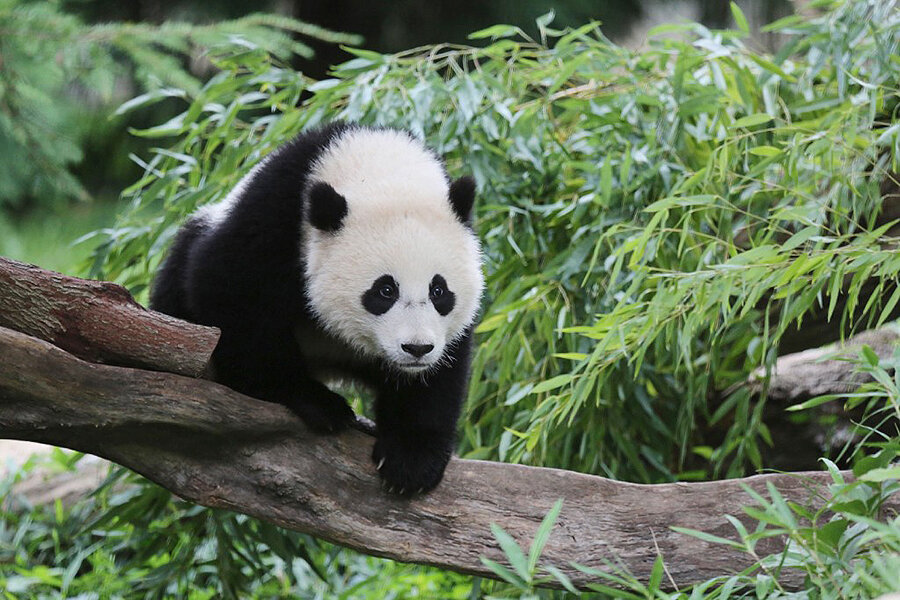D.C. says fare thee well, Bao Bao, following China's panda-renting rules
Loading...
Bao Bao, star of the Smithsonian National Zoo’s famed panda cam, and Zoo Atlanta’s twin panda cubs are returning to China in accordance with a long-term loan agreement with the China Wildlife Conservation Association (CWCA).
For decades, China has loaned its prized pandas to countries in what's known as 'panda diplomacy,' rewarding trade deals and political commitments. Today, they come at a steep cost of about $1 million per year, as CNN reports. Zoos frequently sign a decade-long contract, which stipulates that any cubs born to a loaner panda are returned to their native homeland, typically around age four, to participate in a breeding program aimed at bolstering the endangered species’ population.
Bao Bao, the first surviving cub born at the zoo since 2005, "is very special to us at the Smithsonian’s National Zoo," Brandie Smith, the associate director of animal care sciences, said in a statement. "She's captured the hearts of people all over the world who watched her grow up on the panda cams, and she has been an ambassador for conservation. We are sad to see her go, but excited for the contributions she is going to continue to make to the global giant panda population."
The National Zoo will be announcing "special opportunities for the public to say goodbye and celebrate Bao Bao" before she heads to her new home in China within the first few months of 2017, according to the zoo. In the meantime, her caretakers are preparing her for the journey and getting her accustomed to her crate by rewarding her with treats, including bamboo, apples, pears, and cooked sweet potatoes.
Bao Bao will travel by plane accompanied by one panda keeper, who will remain with her in China while she acclimates, and one veterinarian. Once in China, she will travel to one of the China Conservation and Research Center for the Giant Panda (CCRCGP) bases.
Pandas have been a symbol of the conservation effort for years, including literally being the logo for the World Wildlife Fund (WWF).
"Pandas are far more than an endangered species," WWF Germany's Volker Holmes told German media outlet Deutsche Welle last year. "They are a symbol of how we humans deal with nature on Earth."
But many conservationists feel that the massive amounts of money spent on panda conservation, and other beloved animals such as elephants and rhinos, would be better spent on habitat restoration or on other more ecologically vital endangered species – particularly considering the panda's apparent disinterest in continuing the species.
Pandas in captivity seem to be notoriously uninterested in reproducing. Many cubs born in captivity have been conceived via artificial insemination, and attempts to introduce panda cubs into the wild have been largely unsuccessful.
In a column for a Guardian called "Should pandas be left to face extinction?", British naturalist Chris Packham wrote:
We should be focusing our conservation endeavours on biodiversity hotspots, spreading our net more widely and looking at good-quality habitat maintenance to preserve as much of the life as we possibly can, using hard science to make educated decisions as to which species are essential to a community's maintenance.
This report includes material from the Associated Press.








